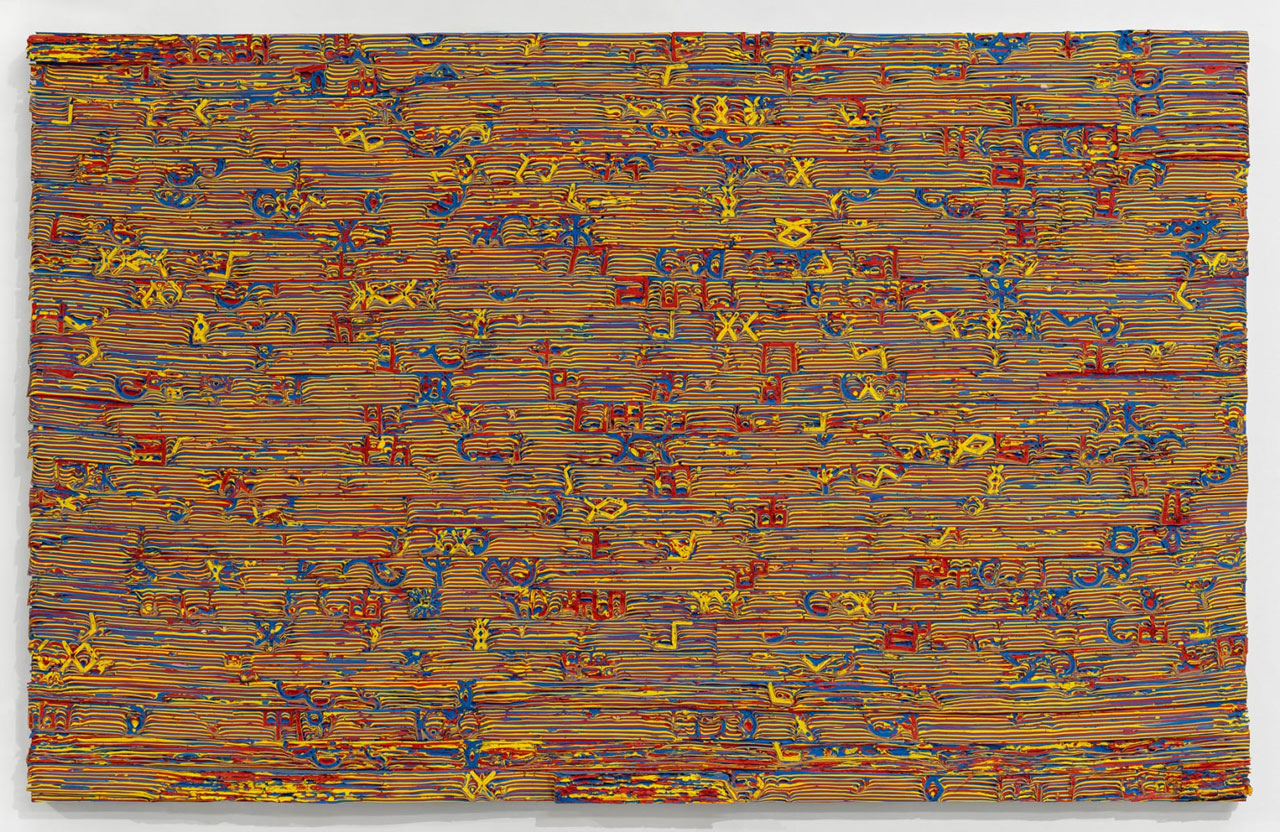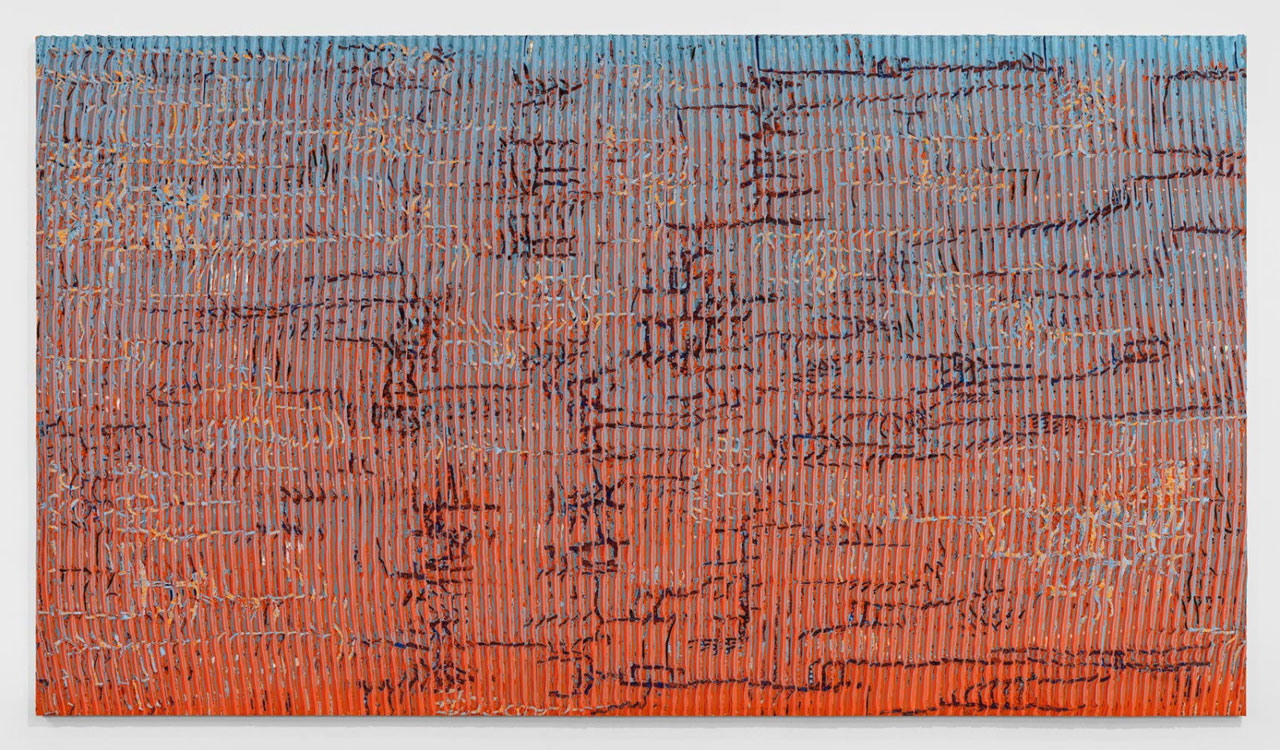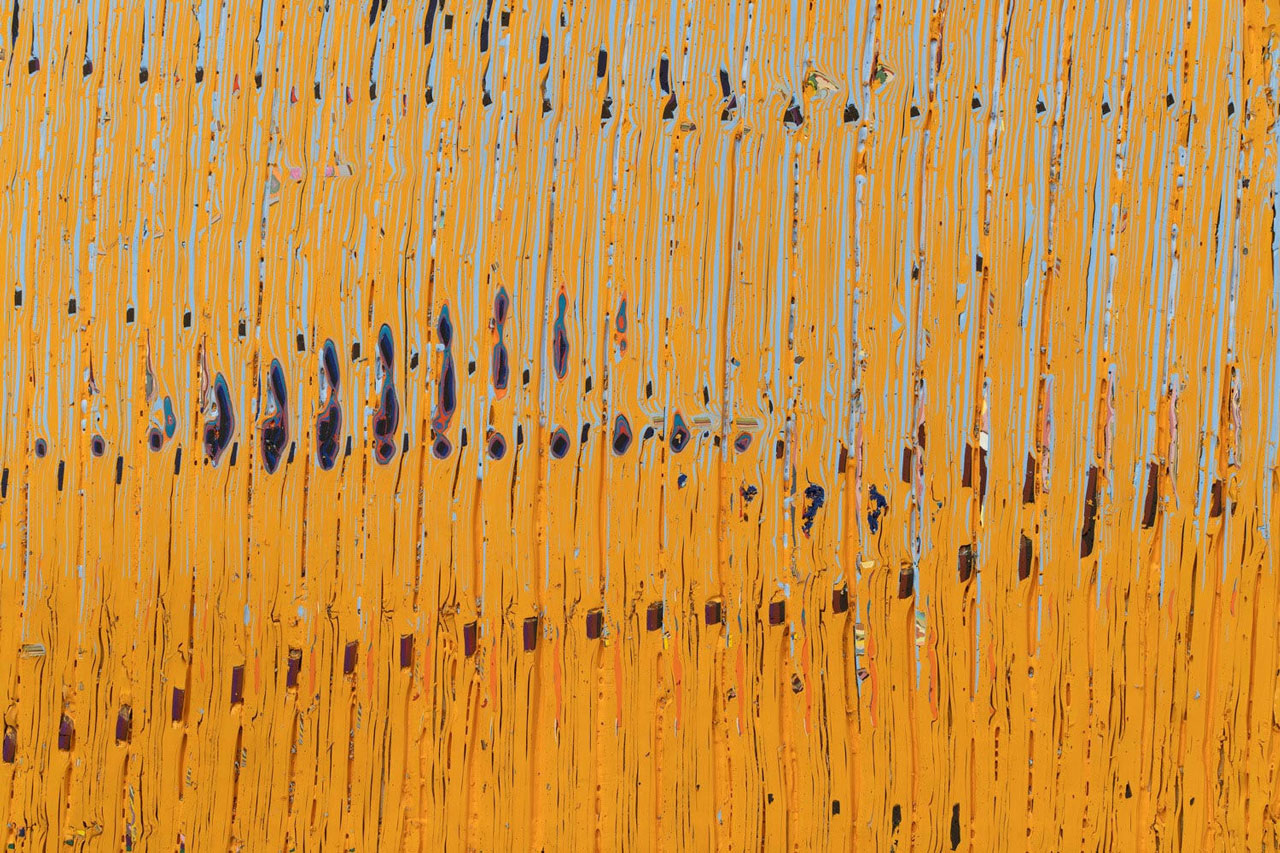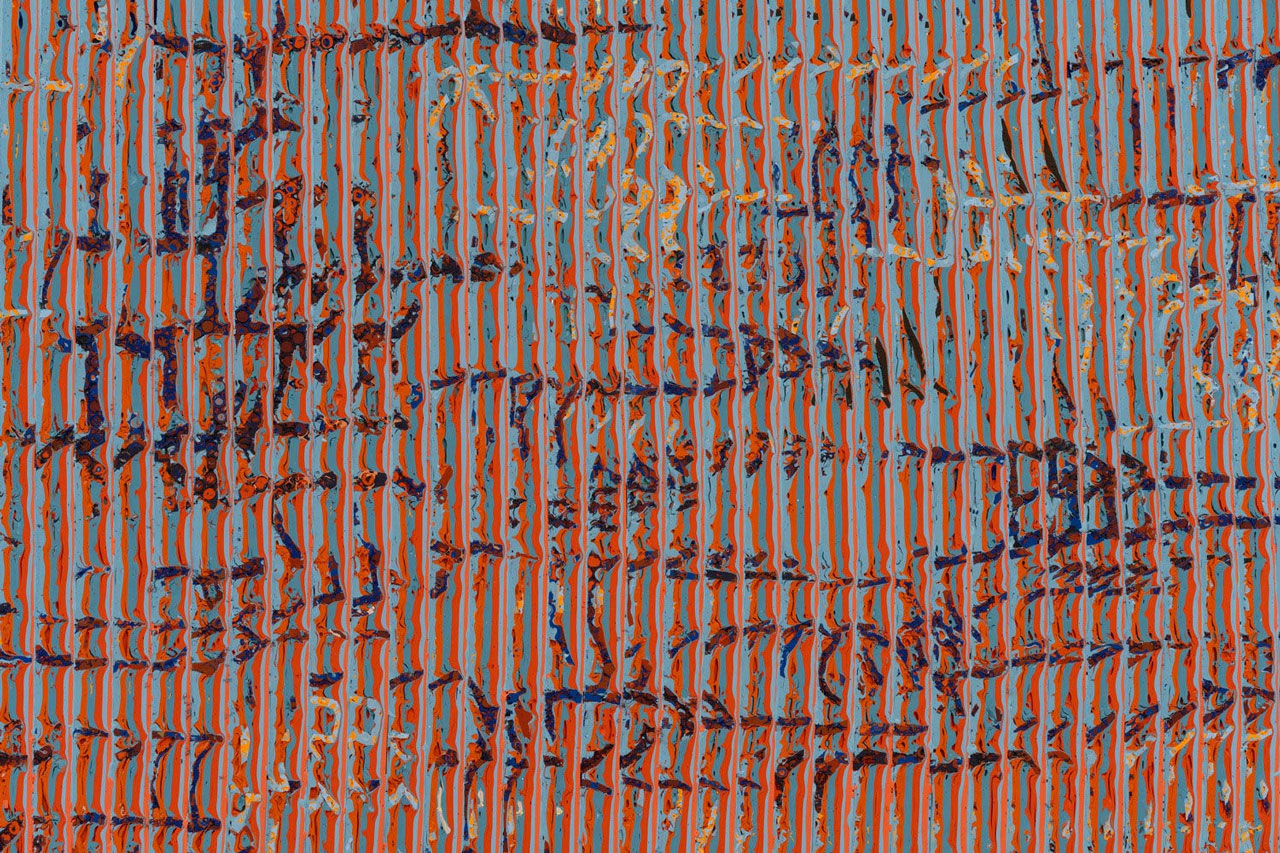PRESENTATION: Loriel Beltrán-Total Collapse
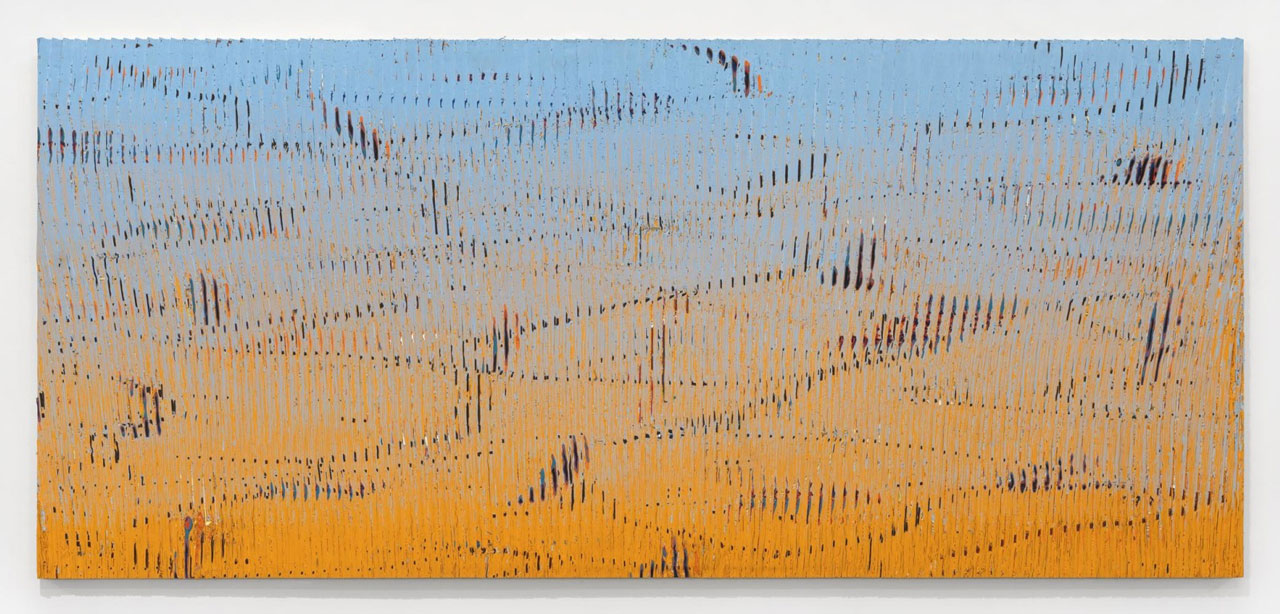 Loriel Beltrán creates sculptural accumulations of paint and color that defy traditional notions of artistic media. Poetically merging painting and sculpture, the artist states that his works “resist becoming images” and instead materialize color in its full complexity. Situating his work between the legacy of Latin American modernism and postwar painting in the United States, Beltrán dissolves distinctions between image and object, surface and substance, plane and structure. While the artist considers perceptual effects, he remains equally invested in issues of materiality, process, and industry, foregrounding artistic labor and the residue it leaves behind.
Loriel Beltrán creates sculptural accumulations of paint and color that defy traditional notions of artistic media. Poetically merging painting and sculpture, the artist states that his works “resist becoming images” and instead materialize color in its full complexity. Situating his work between the legacy of Latin American modernism and postwar painting in the United States, Beltrán dissolves distinctions between image and object, surface and substance, plane and structure. While the artist considers perceptual effects, he remains equally invested in issues of materiality, process, and industry, foregrounding artistic labor and the residue it leaves behind.
By Efi Michalarou
Photo: Lehmann Maupin Gallery Archive
Loriel Beltrán presents “Total Collapse”, his first solo exhibition in Korea. Beltrán was born in Venezuela and immigrated to the United States as a teenager, and he has cited a number of Venezuelan artists as significant influences. Beltrán locates his work at the intersection of a variety of art histories and traditions across the Americas He identifies points of connection between the physicality of his painted strips and Gego’s notion of the line as object, while his perceptually complex compositions also gesture to histories of the Op and Kinetic art movements in Venezuela, with the work of artists Jesús Rafael Soto and Carlos Cruz-Diez embedded in his visual memory. At the same time, he identifies significant points of connections with a number of postwar United States artists, evoking Jack Whitten’s material experimentations, Lynda Benglis’s pours, Agnes Martin’s organic grids, the notion of the flatbed picture plane in Jackson Pollock’s work, Mark Rothko’s exploration of the color’s expressive potential, and Robert Morris’s engagement of chance and gravity. The result of a meticulous and labor-intensive process, Beltrán’s surfaces are composed of layers of paint that have dried to create vibrating optical effects. The artist produces custom molds and pours paint into them, allowing the paint to harden and dry over time. He sometimes integrates objects into his molds—including leftover materials or detritus from his studio—to insert “interruptions” in his compositions. Beltrán repeats this process for several months, or even years, allowing layers of paint to coagulate and accumulate. The artist then removes the mold and slices the resulting object—a hardened block with swirls and layers of color—into strips using a custom-built slicing machine. The strips are then arranged into planar compositions, which he adheres to a wooden substrate. Sculptural in terms of process, the resulting panels are ultimately hung vertically and perceived as paintings. In “Total Collapse” the history of painting provides a rich repository of accumulated knowledge that Beltrán visualizes as a hyper-compressed archeology of techniques, materials, and artistic movements. In “Diana I (Renoir)” (2023), the artist presents a gloss on history painting, exploring the influence of Impressionism on his own work as digested through his signature process. Renoir’s Diana appears as code, the syncopated greens and pinks suggesting the foliage and flesh of the original work through a process of stratified translation. Beltrán suggests that every new artwork is in some ways a compression of the art historical canon itself. Similarly, “in a field of signs” (2022), layers compress and converge around a code of scattered pictograms recalling an alphabet. At once logical yet nonsensical, a field of signs dissolves the distinction between image and language, suggesting that both are built on an accumulation of sociocultural histories. The exhibition extends beyond human histories to consider pressure in environmental ecologies. “Atmosphere collapse” (2023) explores the fragility of the habitable zones we take for granted, its blue and crimson spectrum showing poignant cracks across its vivid surface. Beltrán has long been fascinated by the dual optical and tactile nature of color. Many pigments are distilled from organic sources or extracted from minerals deep in the earth. While produced by light and perceived via the eye, color also maintains fundamental connections to physical matter. Works such as “Pigments from tar” (2023) and “Aniline light” (2023) make these ancient histories newly visible, creating kaleidoscopic meditations on the chemical reactions between sunlight and sediment. The layers of Beltrán’s paintings likewise recall the strata of the earth, connecting to deep geological time through the process of their making as well as in their widening exploration of environmental concerns.
Photo: Loriel Beltrán, OB atmosphere (interrupted), 2023, Latex paint on panel, 40 x 90 inches, 101.6 x 228.6 cm, © Loriel Beltrán. Courtesy the artist and Lehmann Maupin, New York, Hong Kong, Seoul, and London and CENTRAL FINE, Miami Beach, Photo by Zachary Balber
Info: Lehmann Maupin Gallery, 213, Itaewon-ro, Yongsan-gu, Seoul, Korea, Duration: 9/11-23/12/2023, Days & Hours: Tue-Sat 11:00-19:00, www.lehmannmaupin.com/
